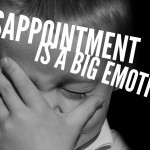Resilience has become the buzz word in schools over the past decade and there have been many self help parenting books written on the topic. When we were growing up, I don’t remember anyone talking about how important it was to build resilience and why it was necessary. So why now?
The definition of resilience as a scientific term is ‘the power or ability to return to the original form, position etc., after being bent, compressed or stretched; elasticity’ (Dictionary.com, 2010). That makes sense even when applying it to children. It is the ability to bounce back and readily recover from a bad situation, illness or adversity.
Maybe when we were children it was more about reading, writing and arithmetic at school and rote learning, or we had more freedom to explore and take risks to learn our own problem solving techniques, resolve conflicts and develop self-esteem. Or maybe we should have been taught how to bounce back?
There are Bounce Back programs and other resilience programs now taught in schools. They encourage wellbeing and build resilience through self-knowledge (courage, optimism, success), social awareness (core values, emotions, relationships, bullying) and self-management (emotions, helpful thinking, humour).
But as a parent, we also have a responsibility to build resilience – in three ways, physically, emotionally and socially within our children.
Parents need to start early to find ways to build resilience so when a child reaches their teenage years, they have the skills to be able to cope with conflict, mental illness, cyberbullying, physical illness, accident or other situations they may face. Implement resilience strategies early and start with an end goal in mind.
Here are 5 ways to build resilience in your children.
1. Encourage problem solving
Encourage your child to solve their own problems. Sure, they will not always get to the right answer but they need to go through the process. This applies to their school work as well as everyday problems, like what to wear for the day.
If they are in preschool, don’t choose their clothes for them. Make sure you have suitable clothes in the cupboard for the season and let them choose their own clothes and form their own identity.
Don’t jump in too soon when sibling rivalry occurs – see how far they can get to resolving their own battles.
Of course, along the way, encourage them to make the right choices and work through a step by step or restorative practice to solve the problem ie. ask your children what happened, when and have both children give the story of the argument to work through the problem.
2. Develop healthy self-esteem
Help your child to develop their self-esteem – that is, how much they value themselves or self worth.
Self-confident children tend to be able to handle conflict and pressures better when they are adults and it is much harder to change negative self-esteem than to start early and develop healthy self-esteem. However, it is important to find a balance.
Your child must feel loved and praised for there achievements, but their achievements cannot be the only focus of who they are. They have to try, fail, try, fail, succeed, try, succeed, fail and so on, to develop who they are and we need to encourage and commiserate every try, fail and success.
It seems today’s children are praised for doing the smallest things, such as good boy for going to the toilet. Save the praise for the real things and encourage when there is a fail.
Avoid using putdowns to your child as much as possible, if they are criticized constantly and told they are ‘stupid, naughty, dumb’, they will eventually believe it and this will have a negative impact on their self-esteem.
3. Promote healthy relationships
As a parent, it is important to model how to develop a healthy relationship. It is OK to occasionally argue in front of your children, provided they see there is a resolution and see how you got there.
It will help them manage conflict when they are faced with it. It is also OK for your child to see you give your husband or wife a cuddle or love pat on the way past. They will then see both sides of a relationship.
It is also important to develop healthy relationships between you and your child. Your relationship will have its ups and downs and that is fine, as long as you talk to your child about the up and down process and show them the cycle has to be like that.
If it were up all the time, it wouldn’t be a healthy relationship. At school, they will built friendships and it is only healthy if it is up and down as we can’t hold onto the up forever.
4. Encourage good nutrition
To help our children bounce back physically, we must encourage good nutrition. I have said a thousand times to my children, eat your vegetables but saying that is the tip of the iceberg.
It is important to encourage a balanced diet – with less packaging and more fresh food, or sun food ie. food that has been grown.
Modeling healthy eating and serving meals that are healthy are the essential ways to encourage good nutrition.
I once spoke to a mother and she told me who 2 year old would only eat chicken nuggets for dinner – she was obviously cooking them for her. It is our responsibility as a parent to help our child eat well.
Ideally, once you have instilled a sense of good nutrition, your children will choose to eat healthily from the school canteen or on takeout nights.
Hand in hand with good nutrition is promoting exercise. Talk young kids to the park at least twice a week and let them run. Encourage school children to get involved in school sport and have a go at every sport and event.
Good nutrition and exercise lead to higher self-esteem and increased physical strength to bounce back.
5. Teach your child to recognise their emotions
Children, especially young children struggle to recognize their emotions. A true example is when a little boy in Kindergarten knows his friend is leaving, instead of saying ‘I’m sad’, he hits him because he is sad. Here is a really simple activity you can do with your children to help them recognize their emotions.
On a piece of paper, draw three columns. If you have a red or green texta, get them. In the first column, brainstorm with your child bad or RED emotions and write them down (preferably in red pen or texta).
In the second column, brainstorm with your child good or GREEN emotions and write them down (preferably in green pen or texta). Then talk about how they can get from bad emotions to good emotions when they are faced with a situation and write them down in the third column.
If your child can write, you can help them to do the chart. It is important your child takes ownership of his or her own chart.
So it may look like this;
RED emotions GREEN emotions Activities to move from Red to Green
Sad Happy Play with my friends
Angry Excited Have a cuddle with mum
Cold Relieved Call my grandma
Scared Confident Play with the dog
Lonely Calm 10 minutes on the computer
When they are experiencing an emotion they don’t know how to deal with, for example anger – bring out their chart and let your child choose the emotions or what they are feeling, from the chart.
For really small children, you can do this through using expressions, not words. They will then choose the activity they want to use to help them move from their red emotion to their green emotion.
Obviously building resilience doesn’t happen overnight. It is a life long commitment to helping your child to bounce back from situations of change, misfortune, conflict and pain and adapt to situations of stress and adversity.
However, if you put the hard yards in now, your child will be a resilient teenager and adult and rise above such problems with the right tools.
Want more? Sign up to the Positive Parenting newsletter here
Anna Partridge is a Parent Education, School Teacher and Mother to 3 kids. She is passionate about working with families to help them raise confident and resilient children. See how you can work with Anna here www.annapartridge.com/parenting-support.







[…] Building resilience in your child – One of the best gifts you can give your child are the skills to bounce back from any situation. Children from a young age can learn these skills and carry it with them throughout their journey in life…. Read on […]
[…] “Encourage problem solving.” How to Build Resilience in Your Child by Anna Partridge, Positive Parenting with Anna Partridge http://annapartridge.com/building-resilience-in-your-child/ […]